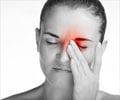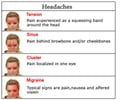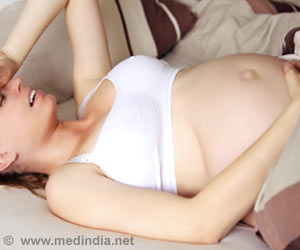Migraine tops the chart of disorders in the U.S.. 18 million people of the 28 million suffering from migraine in the U.S. are women.
Migraine tops the chart of disorders in the U.S.. 18 million people of the 28 million suffering from migraine in the U.S. are women. Only 3-5% of these women get themselves treated, in spite of the preventive therapy being very effective in managing the problem.
Mayo Clinic in Arizona Women's Health Internal Medicine physicians assessed all the major studies on migraine published in the last 5 years in order to understand this matter better. The August 2006 issue of the Mayo Clinic Proceedings has the compilation of the study results in the form of a concise review for clinicians."Most people with migraines first seek help from their primary care provider instead of a neurologist or a specialist. The purpose of our paper is to provide more information for primary care physicians who typically manage these cases," says Beverly Tozer, M.D., who led the review.
The review emphasized preventive therapies for migraines at different stages of a female's life. According to Dr. Tozer, strong evidence suggests that hormonal changes effect migraine development, with migraines being most prevalent during the reproductive years.
"Almost one-fourth of women in their reproductive years experience migraines," Dr. Tozer says. "During these years, women are building both their families and their careers. The predominance of this disorder in women with its associated social, functional and economic consequences makes migraine an important issue in women's health." Approaching the issue with regard to hormonal causes, the Mayo authors tracked migraine development and treatment for women from childhood to menopause.
Childhood and Adolescence: Research found that in children ages 4 to 7, girls are less likely than boys to have migraines. However, by puberty, girls are three times more likely than boys to have migraines. Stress is a major migraine trigger for children and adolescents, and stress management techniques have helped children as young as 8 years.
If other therapies and lifestyle changes fail to reduce migraines, researchers have found that cyproheptadine is a useful medication for children under 6, with several other preventive medications available to older children. As many as one-third of all pediatric migraine patients require periodic courses of daily preventive medication.
Advertisement
Medications used in the prevention of menstrual migraine include nonsteroidal anti-inflammatory drugs, ergots, alkaloids and triptans. Medications used in the prevention of other migraines also are effective in preventing menstrual migraine. In some patients, menstrual migraines also may be managed with hormonal manipulation using oral contraceptives. However, reviewers emphasized that oral contraceptives should not be prescribed in migraine patients who smoke because of the dramatic increased risk of stroke.
Advertisement
If it is determined that the benefits of the preventive therapy outweigh the risks to both mother and fetus, medications such as propranolol hydrochloride, verapamil hydrochloride and topiramate may be used. However, valproic acid, divalproex sodium and ergot derivatives should never be prescribed to pregnant patients.
Menopause: Early menopause -- Changing hormone levels make the menopausal transition challenging for many women with migraines. Studies found that hormonal manipulation and long cycle usage of low-dose oral contraceptives have been useful in managing these migraines.
Late menopause -- Migraines beginning after age 65 is extremely uncommon and warrants further evaluation. Physicians should be aware that as many as one-third of all headaches in elderly women are due to secondary causes. Doctors recommend lower doses of all preventive medicine for this group to avoid side-effects. Medication also should be selected with consideration to other health conditions.
Source-Eurekalert
GYT











